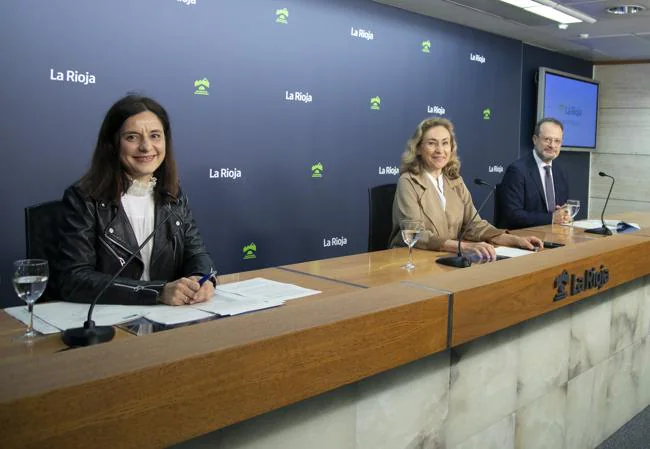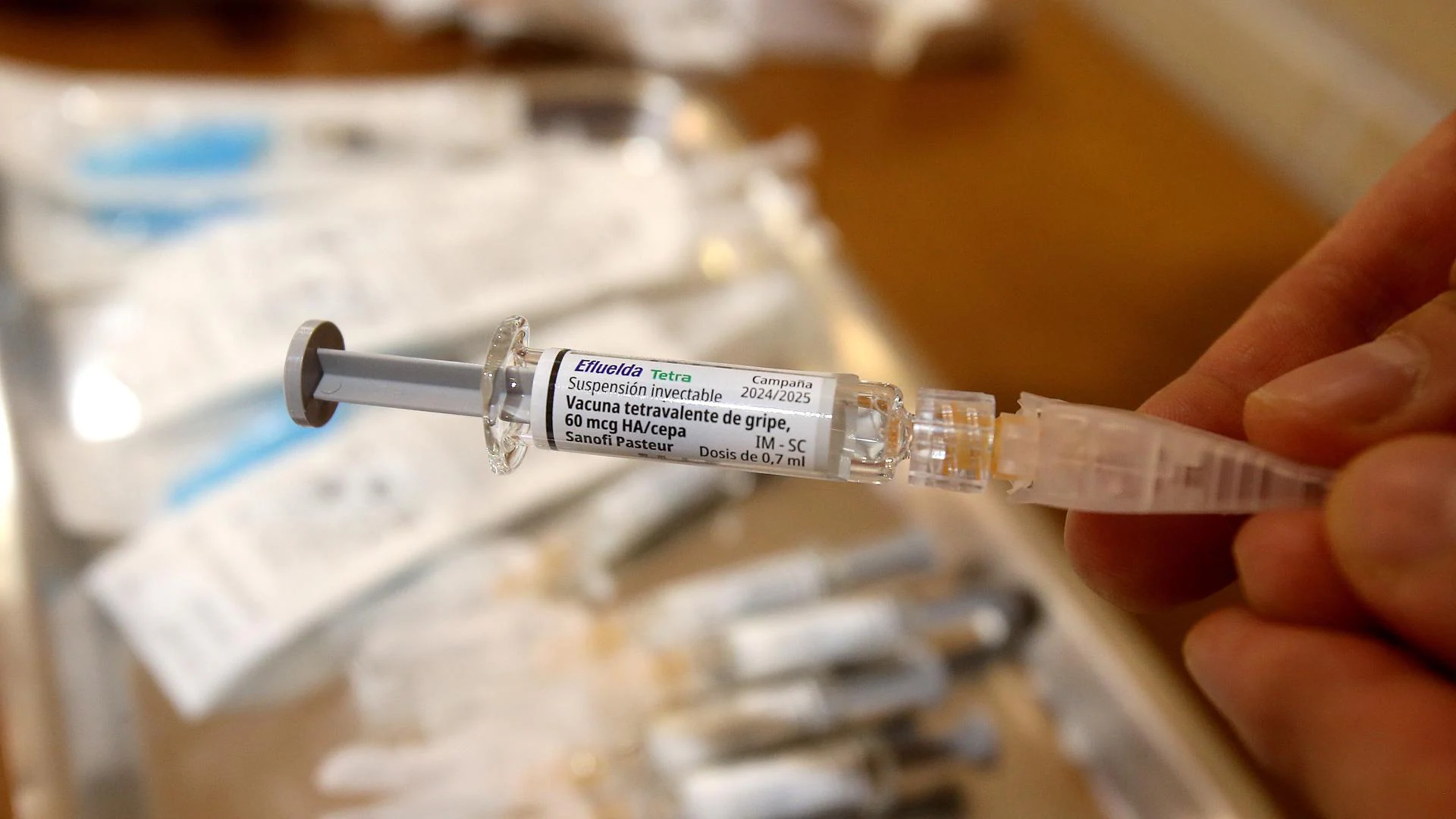


Wednesday, October 16, 2024, 2:53 p.m.
“We want to be prepared to face the challenge of the epidemic of influenza and seasonal respiratory disease that always occurs in autumn and winter,” highlighted this Wednesday the Minister of Health and Social Policies, María Martín, during the presentation of the Plan of Contingency against Influenza and Acute Respiratory Infections (ARIs), a protocol that contemplates at the first level of care, Primary Care, the implementation of the figure of the nursing reception consultation, to carry out triage as exists in the service Emergency; carrying out rapid tests for covid, flu and other viruses; and the implementation of circuits to avoid the coexistence of patients suspected of contagion and healthy ones.
In an appearance in which he was accompanied by the manager of Seris, Luis Ángel González; and the general director of Public Health, Consumption and Care, Eva Martínez Ochoa, the head of Health has recalled that “co-responsibility is the key” and has encouraged prevention and protection to care for the most vulnerable. In this sense, he has called for the vaccination of target groups and the use of protective measures and advice, among which he has cited hand washing, ventilation of closed spaces and the use of a mask in case of present symptoms.
Weekly surveillance and fronts
In the interests of this co-responsibility and in favor of the rational use of resources, María Martín has recalled the possibility of making an appointment through the RiojaSalud application, both in medicine and nursing, in which if early appointments are not offered offers the possibility of filling out a form, thanks to which “within 24-48 hours a health professional will offer us the necessary advice or an appointment if necessary.”
The contingency plan places at its axis the non-care level, Public Health, responsible for the continuous monitoring of the evolution of acute respiratory infections, through various epidemiological indicators, such as incidence, transmission over time, positivity… to go from this. way informing the population and allowing the mobilization of resources from the different levels of care, Primary and hospital care.

In this sense, the manager of the Rioja Health Service, Luis Ángel González, has stressed the importance of optimizing resources and that “we use, first of all, primary care resources, to protect the hospital’s Emergencies for attention to the most serious cases. Thus, he explained that Primary Care will prioritize the identification of the population in the most vulnerable situation (residences and chronic patients in their homes, especially those in rural areas with difficult coverage). In health centers and Continuing Care Points, unscheduled demand and urgent patient care will be managed through the new nursing reception consultation where, a triage model similar to that of the Emergency service, where once assessed with With the help of different protocols and a rapid diagnostic test, the patient will be referred to the most appropriate resource: family doctor, consultation of corresponding health personnel, emergency room…
941 29 83 33 Vaccination appointment
You can request it at that telephone number, Salud Responde, or at your health center or office.
To avoid transmission, and depending on the epidemiological indicators, the manager has clarified that professionals in the administrative areas will recommend masks to patients who come, to minimize droplet transmission of the disease, expediting the care of patients suspected of having the flu. . “In this area, the priority is the early identification of cases to inform them about the benefit of applying isolation measures in homes and minimizing the transmissibility of the virus,” he defended, citing as another novelty the implementation of “circuits in the centers, where possible, and avoiding the accumulation of people in waiting rooms and separating suspected cases of infection from healthy patients.
Low incidence, for now
Regarding the hospital environment, Luis Ángel González explained that the Contingency Plan against Influenza and Acute Respiratory Infections, launched on October 1, is organized in several phases and provides for the “progressive recruitment of new resources in response to the different activity of the flu and the overload that this represents for hospital care. Thus, it has been advanced that, based on various care indicators – patients treated in the emergency room, number of admissions, bed occupancy… – actions are derived such as increasing the number of patients treated from the Home Hospitalization (HAD) service, maximizing places in the pre-admission and short-stay unit, doubling rooms, prioritizing surgical activity without admission or streamlining discharges, among others. After calling for mass vaccination, with a special message to health and social health personnel, the Seris manager detailed that the contingency plan, currently in its minimum phase, zero, contemplates three other levels, 1, 2 and 3, with their corresponding measures and increases in human and health resources, “so as not to reach level 4, which is also planned.”
Finally, the Director General of Public Health has drawn up the current epidemiological x-ray, on which she has highlighted that “the incidence is not, at the moment, high.” Thus, it has been specified that in week 41, last week, the incidence was 660 cases per 100,000 inhabitants in ARIs (acute respiratory infections) and only 6.64 cases per 100,000 in terms of flu. “At the moment it is not increasing, but we will see how it evolves,” said Eva Martínez Ochoa, who has called for vaccination “to achieve the very high coverage that we usually have in La Rioja, which is not easy to achieve. but that we hope to repeat in this campaign. In this sense, he highlighted that “it is having good acceptance, 7,000 doses have already been administered, which is more than there were at this point last year.”
Health began the campaign on October 1 with the vaccination, against flu and covid, of institutionalized people and, at the end of that week, of children under 3 and 4 years old, first and second year Infant students, with the administration of intranasal influenza vaccines in their schools. From the 7th, it was opened to those over 85 years of age, to the population between 6 and 59 months, and to health and social health professionals. Finally, since last Monday, October 14, it has been extended, in health centers and clinics, to the rest of the target groups, over 60 years of age, people over 12 years of age with pathologies, pregnant women; cohabitants with vulnerable people and essential public services personnel. In parallel, the immunization of babies against RSV (respiratory syncytial virus) that causes bronchiolitis is also being developed.
Those interested in getting vaccinated can request an appointment at their corresponding health center or office or through the Salud Responde telephone number, 941 29 83 33
